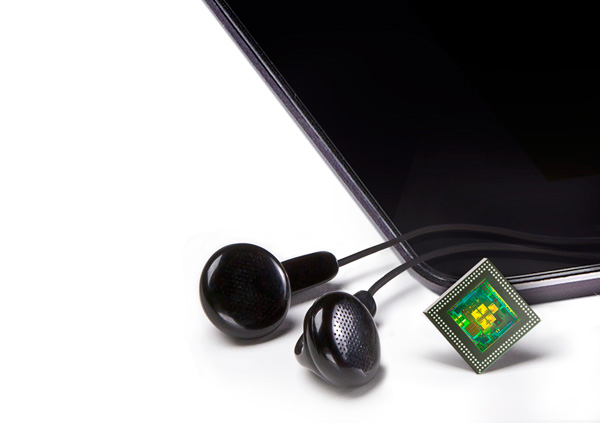NVIDIA's Tegra 3 Launched: Architecture Revealed
by Anand Lal Shimpi on November 9, 2011 12:34 AM ESTASUS' Transformer Prime: The First Tegra 3 Tablet
With Tegra 2, Motorola was the primary launch partner both for smartphones and tablets. Since then, ASUS has risen in the ranks and is now a serious competitor in the Android tablet space. It's no surprise that the first Tegra 3 tablet out of the gate is ASUS' Transformer Prime.

ASUS will launch the Transformer Prime in the US before the end of the year. The tablet's specs are below:
| Tablet Specification Comparison | ||||||
| ASUS Eee Pad Transformer | ASUS Eee Pad Transformer Prime | Apple iPad 2 | Samsung Galaxy Tab 10.1 | |||
| Dimensions | 271mm x 175mm x 12.95mm | 263 x 180.8 x 8.3mm | 241.2 x 185.7 x 8.8mm | 256.6 x 172.9 x 8.6mm | ||
| Display | 10.1-inch 1280 x 800 | 10.1-inch 1280 x 800 Super IPS+ | 9.7-inch 1024 x 768 IPS | 10.1-inch 1280 x 800 PLS | ||
| Weight | 675g | 586g | 601g | 565g | ||
| Processor | 1GHz NVIDIA Tegra 2 (2 x Cortex A9) | 1.3GHz NVIDIA Tegra 3 (4 x Cortex A9) | 1GHz Apple A5 (2 x Cortex A9) | 1GHz NVIDIA Tegra 2 (2 x Cortex A9) | ||
| Memory | 1GB | 1GB | 512MB | 1GB | ||
| Storage | 16GB + microSD card | 32GB/64GB + microSD slot | 16GB | 16GB | ||
| Pricing | $399 | $499/$599 | $499 | $499 | ||
Final Words
At a high level Tegra 3 doesn't surprise us much. The improved GeForce GPU should deliver tangible performance gains both through increased operating frequency and more pixel shader hardware. CPU performance should also be better than Tegra 2 based designs thanks to an increase in clock speed, the inclusion of MPE and the availability of more cores for threaded applications. In the move from one to two cores we saw significant performance increases across the board in Android. I don't expect that we'll see gains of a similar magnitude in moving from two to four cores, but there will be some benefit.
For the majority of use cases I believe NVIDIA has done the hardware homework necessary to extend battery life. Individual cores can now be power gated and the companion core should do most of the lifting while your device is locked or mostly idle, processing background tasks.
How much of an impact we'll actually see from all of this remains to be seen. We hope to have our hands on the first Tegra 3 hardware in the coming weeks, so before the year is up we'll hopefully have some answers.

















94 Comments
View All Comments
Itaintrite - Wednesday, November 9, 2011 - link
That HD decode processor will make a lot of people happy.JoeTF - Thursday, November 10, 2011 - link
No it bloody won't. Tegra2 already has hardware video decode unit and it's main trademark is that, it cannot even decode properly (no prediction, but more importantly - not enough power to decode anything higher than L3.0 at 30fps).Hardware video decoder in Tegra3 is pretty much unchanged from T2. Hell, you can see light framedrops even in their marketing video.
Good thing is that they added NEON instruction. Sadly, it mean we will have to use all four cores at 100% utilization to playback our videos correctly and under those conditions runtime will be severely constrained (the 8h they talk about is for hardware decode, not NEON-based cpu decode)
3DoubleD - Thursday, November 10, 2011 - link
This is what I've been holding out for, so I really hope your wrong.psychobriggsy - Friday, November 11, 2011 - link
The article states that the video decoder has been significantly enhanced in Tegra 3. Where do you get your information from?Jambe - Wednesday, November 9, 2011 - link
"Die size has almost doubled from 49mm^2 to somewhere in the 80mm^2 range."~80mm^2 is considerably more than double the area of 49mm^2, isn't it?
eddman - Wednesday, November 9, 2011 - link
Umm, no!! 80 is 63% bigger than 49. Simple as that.MamiyaOtaru - Friday, November 11, 2011 - link
c'mon man it's not 49 millimeters squared, its 49 square millimeters. 49/80 is well less than 1/2MamiyaOtaru - Friday, November 11, 2011 - link
see this for some review: http://img379.imageshack.us/img379/6015/squaremmhe...vision33r - Wednesday, November 9, 2011 - link
The Tegra 3 by being evolutionary, left a huge opening for other SOC to surpass it in a matter of months.I don't think the performance will be that huge like the Apple A4 - A5 is on the magnitude of 9x faster.
It will be worthless by April when the Apple A6 comes out and spanks it silly and rumor has it that Apple maybe using a 1600x1200 10" display to up the ante.
If this is true, it means Nvidia has to bring out a Tegra 4 fall summer or fall 2012.
It will be a big iPad 2 X-mas for sure and iPad 3 will easily trump Tegra 3.
metafor - Wednesday, November 9, 2011 - link
I honestly don't think the biggest decision-maker for people considering an iOS tablet or Android tablet has to do with a ~40% difference in GPU performance.When comparing Android tablets to each other -- since the OS is the same -- many people will fall back on "well, x is faster than y". But a 2x performance difference isn't going to change my mind if I like Android better than iOS, or vice versa.
Things like a high-res screen, battery life and usability of the OS have a much bigger impact; so I'd say nVidia or really any Android SoC vendor really aren't competing with Apple's silicon group.